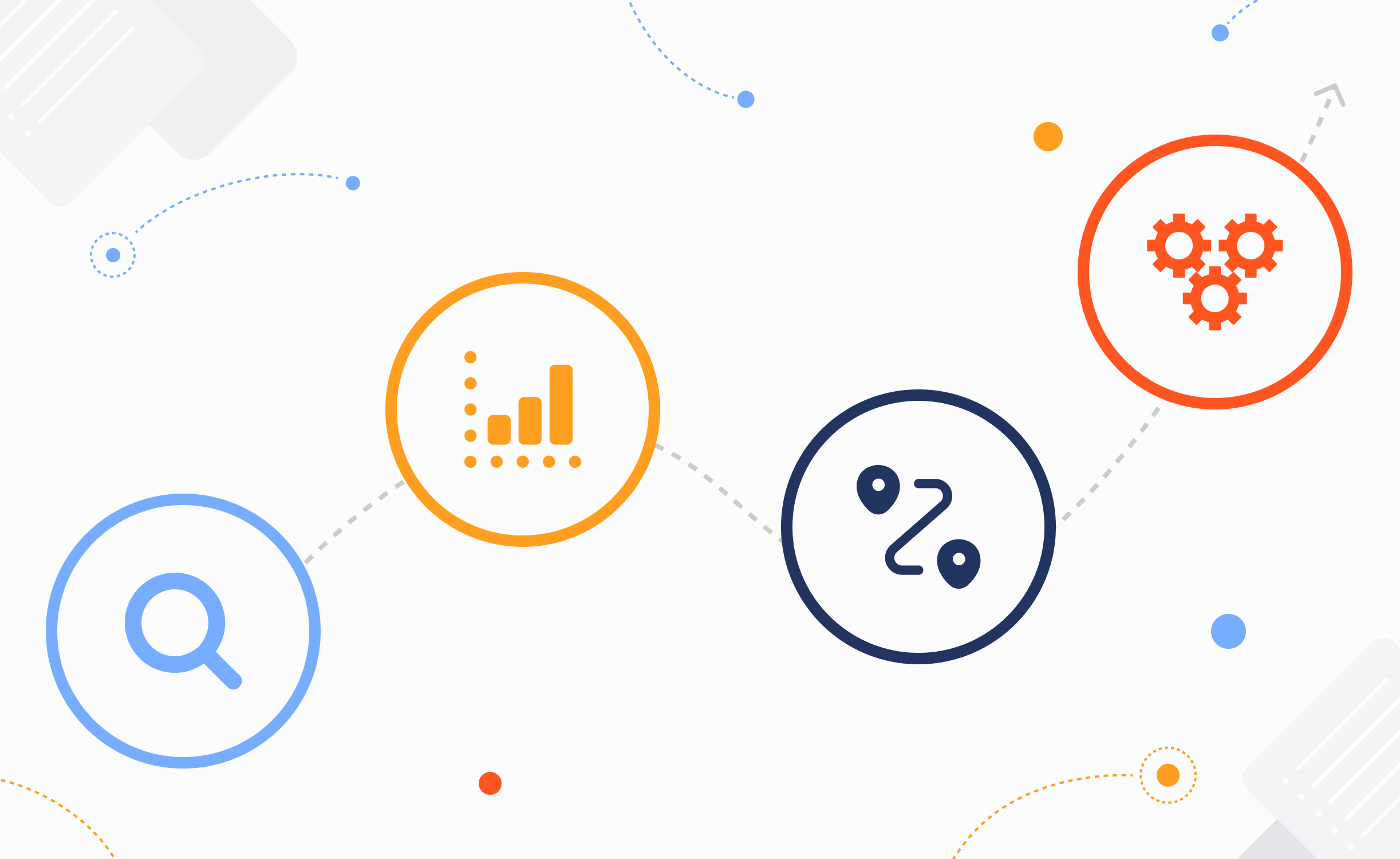4 Types of Analytics: Definitions and Main Differences
Types of Data Analytics
The four types of analytics - descriptive, diagnostic, predictive, and prescriptive - exist on a continuum, which begins with answering the question of what happened, moving on to explaining why it happened, then onto predicting what will happen, and finally up to the most important question when it comes to analytics, how can we make it happen again?

Descriptive analytics
Using Google to track a website's traffic, such as page views and number of visitors is an example of descriptive analytics. It's helpful information to know and this data can be used for pattern discovery methods like customer segmentation, i.e., culling through a customer database to understand a customer's preferred room type. Cluster segmentation models can split customers into their preferred choice of purchases.
Diagnostic analytics
Mining data to determine what caused a spike in website traffic would be an example of diagnostic analytics. Market basket analysis, which utilizes association rules, is considered a descriptive analytics method. This can be used to bundle and offer promotions to customers as well as gain deep insight into a customer's buying habits. Diagnostic analytics can also be used by a business to glean customer shopping and purchasing behavior, priceless data that can be used to develop future products.
Diagnostic analytics attempts to answer the question, "Why did it happen?" Utilizing multiple data mining and data discovery techniques, diagnostic analytics adds an element of causation to the analytics process. It's a step up from descriptive analytics. Creating a decision tree from a website's clickstream data is a form of diagnostic analytics and these data points might reveal why a person clicked his or her way through a company's website.
Predictive analytics
Predictive analytics uses statistical and analytical techniques in an attempt to answer the question, "What could happen?" It analyzes current and historical trends in the data to make predictions about future events. It tries to make forecasts about events and behaviors to help businesses in a multitude of ways, including by lowering operating costs, increasing productivity, improving supply chains, or even predicting customer behavior.
These predictive models can vary according to an event and most predictive models generate a score, often on a scale between 0 and 1, with a higher score indicating a higher likelihood of an event occurring.
Predictive analytics can be used to increase customer purchases, increase marketing lift, reduce labor needs, as well as mitigate customer churn.
Data mining can spot trends in data, can then tools like logistic regression, machine learning, discrete choice models, or time series models can be used to develop a predictive model. Predictive analytics is usually about a future event but it is just as powerful a tool when applied to an unknown element in the past, present, or future. Logistic regression can turn a market basket analysis into a predictor that helps a business understand what items tend to be purchased together, which can help with shelf placement, store placement, or even help with the supply chain. Predictive analytics can also be helpful with cross- and up-selling, direct marketing, labor management, fraud detection, product prediction, project risk management, and customer retention.
Predictive analytics utilizes the following techniques:
- Regression, including linear, logistic, and probit regression
- Discrete choice models
- Time series models
- Survival or duration analysis
- Classification and regression trees
- Multivariate adaptive regression splines
- Machine learning
- Neural networks
- Naive Bayes
- K-nearest neighbors
Prescriptive analytics
Prescriptive analytics attempts to optimize a key metric while asking the question "how can we make it happen again?" This type of analytics is the hardest to reach but it will have the biggest impact on a company's ROI. Key metrics can be a company's revenue and/or profit, labor hour utilization. Prescriptive analytics tries to anticipate what will happen, when it will happen, and then add the all-important "why it happens?" to the mix. Prescriptive Analytics applies logic to data to determine a preferred course of action. Its output is a decision.
Prescriptive analytics can evaluate a mixture of structured and unstructured data to predict what might affect certain aspects of the business and then advise how best to exploit this predicted future without compromising other competing priorities.
A standard predictive and prescriptive modeling process includes the following six steps:
Project definition
Data exploration
Data preparation
Model building
Deployment
Model Management
Today, analytics is becoming a great differentiator for companies in all industries. Analytics can streamline business processes, reduce labor costs, increase customer loyalty, as well as optimize an operation. Software vendors are taking note, producing analytics software that can be used by the layman who doesn't require a Ph.D. to run logistic regression models or AI neural nets. The analytics powerhouse SAS is being challenged not just by its acronymed competitors, like SAP, IBM, EMC, HDS, and the like, but also by business intelligence and data integration specialists like Alteryx, Tableau, Qlik, and TIBCO, to save nothing of the Hadoop and data lake providers who have sprouted up over the last decade. These companies might offer less complicated solutions, but they are finding great demand for their tools and services as many small- to medium-sized companies are turning to analytics for business insight that is impossible without it.
Final Thoughts
Modern technologies simplify the implementation of analytical features. Data is the most crucial point for analytics. No matter what type of analytics needs to be implemented - data is the key. Amount and quality of the data - this is what the quality of analytics depends on. At Integrio we always advise our clients to track and store as much data as possible.
Contact us

